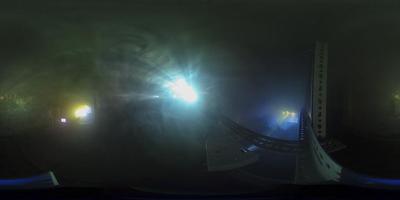‘Formation’ – A Work in Progress

‘…plastic is the very idea of its infinite transformation […] it is less a thing than the trace of a movement’ – Roland Barthes, Mythologies, 1957. As part of a group show, Here Time Becomes Space, curated by Alex Goulden at the Crypt Gallery, London (22.08.17 - 27.08.17), Ian Dawson and Sunil Manghani presented ‘Formation’ a work in progress, and part of a larger project ‘Solid State’.
An underlying theme for the work is an exploration of plasticity both in terms of material processes and ‘ideas’ of cultural plasticity. It is as if plastic outplays its own entropy, always to find order in its fluid forms; to settle at its own level. Little surprise plastic has its own entry in Barthes’ classic collection of everyday myths. Writing in the 1950s, his attempt to find a ‘language’ for all manner of cultural phenomena coincides with the post-War developments in new forms of plastics and the explosion of mass-produced goods. Today, the vast energy required to manufacture plastics, and the difficulty to dispose or recycle it, puts it at odds with contemporary environmental citizenship. Yet, new fascination has been ignited by developments in 3D printing. The closing line of Barthes’ essay on plastic is eerily prophetic: ‘The hierarchy of substances is abolished: a single one replaces them all: the whole world can be plasticized, and even life itself since, we are told, they are beginning to make plastic aortas’.
In working towards a collection of sculptural works, Dawson and Manghani have been working with a matrix of ‘plastic pop’ references of a historical trajectory from Michael Jackson to Kylie Minogue, to Beyonce, to the Kardashians. Each of these characters represent malleable forms: whether as bodies that shimmer, ever transfiguring, and effortlessly merging with fashions; or as ‘culturally essentialist’ identities that manufacture and mobilize race and gender. Cutting through this timeline of ‘pop’ was the emergence of a new analogue technology, the ‘solid state’ mixing desk, that (prior to digital) enabled the real-time programming of music. We generally recognise plastic when it is in a solid state, yet it is its ability to ‘re-mix’ itself that defines it. The planned works each take instances of plasticity and refashion them, along the way acknowledging degradation and anomalies. We think of digital 3D printing and scanning as offering ‘clean’ virtual tools, yet in fact they spill, jar and fragment. Solid State is like the ‘syntax error’ in our contemporary mythology of a fluid, sharable world. In the State we’re in (with its supposedly porous boundaries and hierarchies), we need new tactics, new ways of making sense of being plastic. As Trevor Horn, an innovator of solid state music production, puts it: ‘Should the rhythm track be like this or that? If you don’t know, then you’re just selecting an option. Whereas if the decision makes itself, well, it’s obvious it should be this one…’
Images from the exhibition can be viewed here.